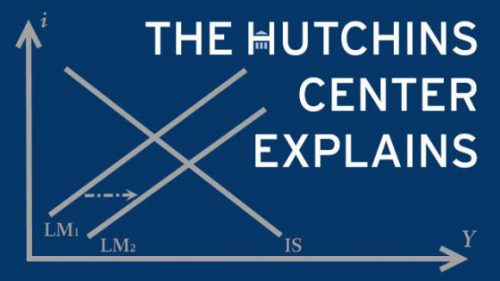The U.S. dollar is the world’s dominant currency. However, amid rising geopolitical fragmentation, conflicts over international trade and finance, and populist backlash against globalization in many Western democracies, there is persistent speculation that the dollar’s status is at risk. This post explains the role of the U.S. dollar in the global economy and the debate over its future.
How is the dollar used abroad?
Reserves. Governments and central banks around the world hold dollar-dominated assets, usually U.S. Treasury debt, as reserves to manage the foreign exchange value of their currencies or weather economic shocks. Dollar assets comprise about 59% of global foreign currency reserves; the next largest share is the euro at 20%.
Borrowing. Foreign governments and corporations borrow money in dollars to insure their creditors against foreign exchange risk; 64% of world debt is denominated in dollars.
Payments. The dollar makes up a large portion of international payments—58% excluding payments within the eurozone—and foreign exchange transactions.
Trade. The dollar plays a major role in global trade. As of 2022, the dollar is used in 54% of foreign trade invoices globally.
The figure below illustrates the dollar’s role in the global economy across six dimensions—foreign exchange reserves, international debt, international loans, international payments, trade invoices, and foreign exchange markets—compared to its primary competitors: the euro, the British pound, the Japanese yen, and the Chinese renminbi.
Why is the dollar the world’s dominant currency?
The U.S. dollar has been the world’s dominant currency since the 1920s, when it overtook the British pound.
The U.S. has a large and dynamic economy—26% of world GDP—and a track record of stability backed by investor protections and the rule of law. The size and stability of the U.S. economy means the dollar is an effective store of value and safe haven for foreign investors, who have confidence in the dollar. And as Brookings’ Eswar Prasad notes: “Economic and geopolitical turmoil serves only to intensify the quest for safe investments, usually leading investors back to the dollar, which remains the most trusted currency.”
In addition, the dollar is entrenched in global trade and finance. U.S. firms play an important role in global trade. Foreign firms and governments conduct trade in and exchange dollars—even when U.S. companies are not involved in the transaction. In addition, the U.S. is the largest recipient and source of foreign direct investment worldwide. American capital markets are deep, open to the world, and highly liquid, making it easy for foreign investors to purchase U.S. debt. The dollar is easily convertible—easy to buy or sell in foreign exchange markets—while central banks around the world use the dollar to preserve the value of their currencies. The Fed extends swap lines to foreign central banks, providing them with dollar liquidity during times of severe financial stress. Lastly, changing the structure of the international financial system is difficult. The U.S. helps oversee the infrastructure and institutions that dominate the international financial order, including the Society for Worldwide Interbank Financial Telecommunication (SWIFT), an interbank payment messaging platform, and the Clearing House Interbank Payments System (CHIPS), an interbank payment clearinghouse.
What are the benefits and costs of a dominant dollar for the U.S.?
The benefits of a dominant dollar have been called an “exorbitant privilege” for the U.S. It lowers the cost of borrowing and debt service for the U.S. government and American consumers; it also means that the U.S. can borrow more than it would be able to otherwise. For consumers, a dominant dollar, working through the exchange rate, reduces the cost of imports, making it easier to purchase cheap goods from abroad. The dollar’s global reserve status reduces the chance that the U.S. will face a currency crisis, in which a sudden devaluation of the dollar could halt imports, deteriorate the terms of trade, and cause a financial crisis. (This also works in reverse: Other countries become more susceptible to the dollar and U.S. financial conditions.) In addition, the ubiquity of the dollar gives the United States power over the international financial system—most notably in the form of sanctions.
The dollar’s dominance also has costs to the U.S. With a dominant dollar, according to economist Michael Pettis of the Carnegie Endowment for International Peace, “the United States must let capital flow freely across its borders and absorb the savings and demand imbalances of other countries—that is, it must run deficits to offset the others’ surpluses and allow them to convert their excess production and savings into U.S. assets by purchasing real estate, factories, stocks, or bonds.” These economic imbalances could increase American indebtedness, as excess savings flow to safe U.S. assets from abroad. Foreign demand for the dollar can also put upward pressure on the dollar’s exchange rate even at a time when economic conditions would otherwise be pushing the dollar’s exchange rate down.
Yes, by some measures. For instance, the dollar’s share of global reserves has fallen from more than 70% in 2000 to 59% today.
Foreign reserves are not flowing to the dollar’s major competitors, the euro and the yen. Instead, reserves are going to what are sometimes called “non-traditional currencies,” such as the Canadian dollar, the Australian dollar, and the Chinese renminbi. Apart from China, these are the currencies of stable countries with strong economies and close relationships with the United States. That stability, combined with higher returns on reserves that central banks may earn from diversifying their currency holdings, may explain part of this shift.
The shift from dollars has also been pronounced in countries concerned about U.S. financial sanctions, like Russia and China, and dollar hegemony. Such central banks have also increased their holdings of gold, though gold remains a small percentage (about 10%) of overall central bank reserves.
Is the dollar destined to lose its dominance?
Most economists think not, at least not any time soon. First, in some instances, the dollar’s prominence has increased, not fallen. Outstanding debt securities held in dollars have grown from 49% in 2010 to 64% in 2024, for example.
Second, competitor currencies, like the euro or Chinese renminbi, do not share the attributes that have made the dollar dominant. Most government debt in Europe is issued by individual member states, not by the EU, and the eurozone crisis damaged the currency’s attractiveness. The Chinese government maintains strict capital controls to manage its exchange rates, making it difficult to move money out of the country, and the renminbi is highly illiquid.
Though the dollar’s role in the global economy is contested, Steve Kamin of the American Enterprise Institute and Mark Sobel of the Official Monetary and Financial Institutions Forum argue that the U.S. can maintain the benefits of a strong dollar over the long haul by “[preserving] the unique characteristics and properties of the U.S. economic and financial system, [running] sound U.S. macroeconomic policies, [avoiding] the unilateral abuse of financial sanctions, and [upholding] worldwide trust and confidence in America’s ability to act responsibly and fulfill its special responsibility for the smooth management of the international monetary system.”
What are the challenges to dollar dominance?
Sanctions. Since 2010, the U.S. has increased its use of sanctions. Critics of U.S. sanctions contend that the U.S. has “weaponized the dollar,” especially when the U.S. imposes sanctions without the support of its allies and partners. In China and China-aligned countries like Russia, leaders aspire to bank and trade in their own currencies away from the watchful eyes of Uncle Sam. The Chinese government, for instance, has promoted the renminbi as an alternative to the dollar in trade and development finance as a part of its Belt and Road Initiative. Leaders of the BRICS alliance—Brazil, Russia, India, China, and South Africa—have explored developing a common currency, though most experts give that little chance of success. If the United States is capricious with sanctions, acts unilaterally, and fails to develop a doctrine of economic statecraft, the dollar could be dethroned, Treasury Secretary Janet Yellen has warned.
Debt and dysfunction. U.S. politics are contentious and polarized. Fiscal policy is undisciplined, with the debt-to-GDP ratio rising to new, previously unheard-of heights. Ratings agencies have downgraded U.S. long-term credit. Bickering over appropriations, Congress has shut the government down several times. Further political instability could erode investor confidence in the dollar.
Technology. Innovations in payment technology could reduce the dollar’s role in the global economy. Josh Lipsky, senior director of the Geoeconomics Center at the Atlantic Council, notes that “[de-dollarization] is less about how countries hold foreign exchange reserves and how much are in dollars—which is how we’re traditionally measuring this—versus how money is being settled.” Transactions involving different currencies have long been slow, expensive, and difficult to track in real-time; it was easier to instantly see the value of currency in U.S. dollars than in some less well-used currencies. But that’s changing. As Brookings’ Eswar Prasad explains: “For example, transactions between pairs of emerging market currencies are becoming easier as financial markets and payment systems mature. Typically, converting such currencies to dollars, and vice versa, has been easier and cheaper than exchanging them for one another. But China and India, for example, will soon no longer need to exchange their respective currencies for dollars to conduct trade cheaply. Rather, exchanging renminbi for rupees directly will become cheaper. Consequently, the reliance on ‘vehicle currencies,’ particularly the dollar, will decline.”
Central Bank Digital Currencies (CBDCs) could also upend the dollar’s role as a currency “middleman” by reducing settlement times, making it cheaper and easier to trade non-dollar currencies, and, unlike SWIFT and CHIPS, integrating messaging and payments.
Foreign governments have taken note. In 2015, China built the Cross-border Interbank Payment System (CIPS) which, in addition to integrating messaging and payment systems, allows countries to bypass SWIFT, CHIPS, and the dollar. SWIFT remains much larger than CIPS, though the latter has been growing rapidly in recent years. The Chinese are also developing mBridge, a CBDC. The Federal Reserve has built FedNow, an instant payment network, but the U.S. could fall behind the rest of the world in payment technologies. As Jared Cohen of Goldman Sachs notes, “If the dollar’s position were to change, it would come from evolution, not revolution.”
-
Acknowledgements and disclosures
The Brookings Institution is financed through the support of a diverse array of foundations, corporations, governments, individuals, as well as an endowment. A list of donors can be found in our annual reports published online here. The findings, interpretations, and conclusions in this report are solely those of its author(s) and are not influenced by any donation.
The Brookings Institution is committed to quality, independence, and impact.
We are supported by a diverse array of funders. In line with our values and policies, each Brookings publication represents the sole views of its author(s).







Commentary
The changing role of the US dollar
August 23, 2024